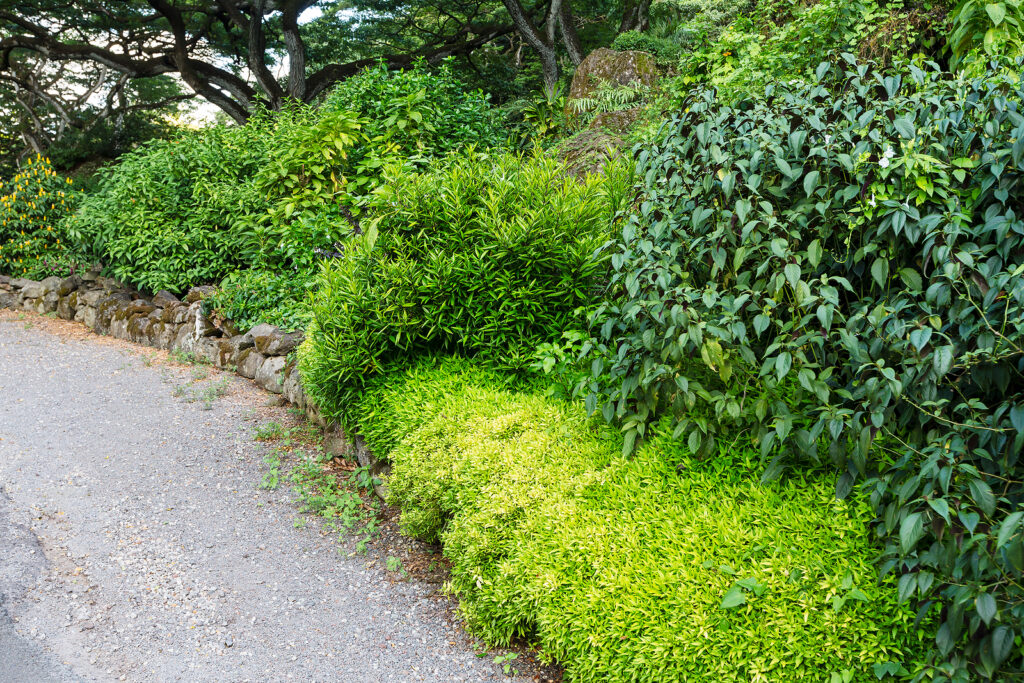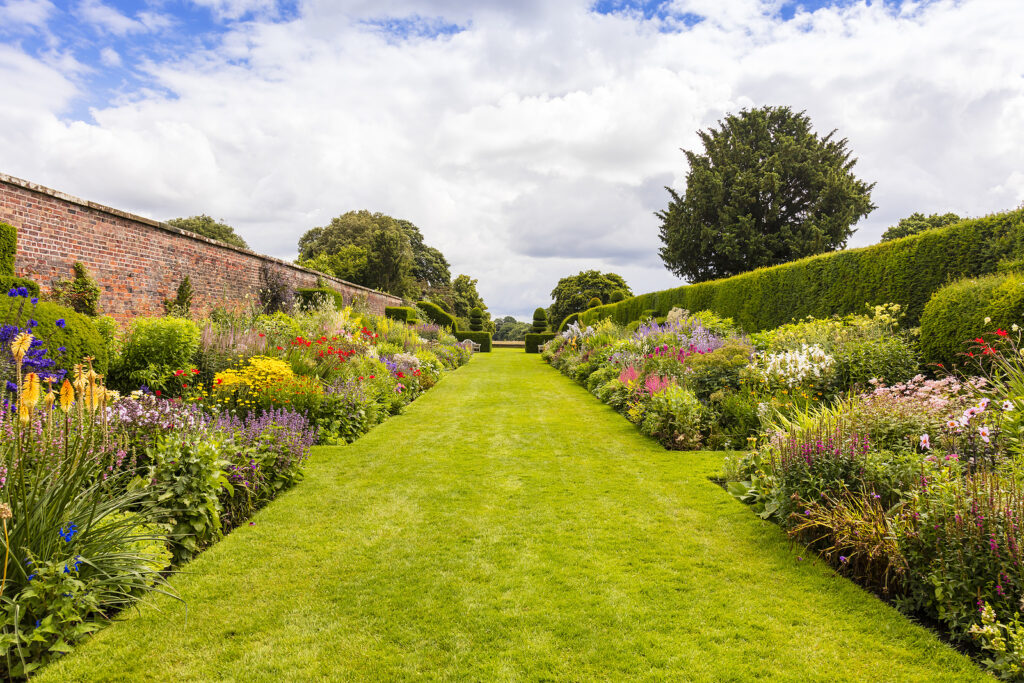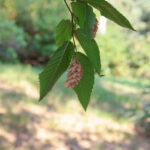Shrubs are important and nearly permanent characters in the garden and landscape. They bring beauty, comfort, and pleasure to the landscape by adding structure to the garden. Shrubs alone can make a garden.
Shrubs offer years of low-maintenance satisfaction. The time and effort spent in shrub care are minuscule compared to the years and even decades of pleasure they give.
Shrubs are relatively self-sufficient. Once a shrub is established its care is mostly a matter of watering and annual or semi-annual feeding and occasional pruning.
Here are care basics for established shrubs:

Watering shrubs
- Water whenever shrubs wilt. Use a nozzle to break the flow of water.
- Lack of water shows first in browning of lower branches
- As a rule of thumb, water shrubs whenever the surface of the soil shows signs of drying out.
- Water at the base of the plant, not overhead.
- Shrubs that are exposed to the wind should be kept moist.
Mulching shrubs
- Use an organic mulch such as leaf mold, straw, or untreated bark chips; it will feed the plants in later years as it breaks down.
- Spread mulch around and between shrubs to about 2 inches (5cm) thick. This will help retain moisture in the soil and help to keep down weeds.
- Spread a thick, fresh layer of mulch each spring.
- In late autumn, place a 6- to 9-inch layer of straw, peat moss, or coarse sand around the base of the plant in late autumn, and leave it there until spring.
Fertilizing shrubs
- Late winter or very early spring is the time to add nutrients to the soil; use an all-purpose granulated fertilizer.
- Clear away mulch and sprinkle fertilizer around the plant at the rate of about 1 cup per square yard or less. Work the granules into the soil with a hand fork or hoe.
Staking shrubs
- Columnar shrubs more than 3-feet tall growing in an exposed wind-buffeted position may require staking.
- Use a stout stake long enough to reach just below the head of the shrub.
- Drive the stake in close to the base of the shrub, taking care to minimize root damage. Then fasten the shrub with either a tree tie or elastic horticultural tape.
- Inspect the stem in midsummer and again every autumn to seed if the ties have become too constrictive. If they are too tight, retie them.

Pruning shrubs
- A shrub will rarely die if left unpruned. Prune shrubs to improve the overall shape, or to remove dead or diseased branches. Prune to let light int the center of an old shrub by cutting away old branches
- Tools for pruning shrubs include pruning shears for removing shoots and small stems; long-handled loppers for larger stems and a pruning saw for large branches.
- When shortening branches, cut just above an outward-facing bud or shoot; cut diagonally, never straight across.
- Remove dead, diseased, straggly, and weak wood from shrubs. Remove branches that have been damaged by wind or storms.
- When removing dead, diseased, or damaged wood, but back to a healthy, outward-facing shoot or bud.
- A sucker is a shoot that grows from the plant base or belowground. Suckers can be left on most shrubs, but suckers that emerge from grafted shrubs (some hollies, magnolias, camellias, rhododendrons, lilacs) should be removed if it appears below the union. Dig to where the sucker joins the plant and twist it off.
- Deadhead flowers after blooming for a neat appearance.
Weeding around shrubs
- Remove any weeds that appear near shrubs. A hoe is the best tool for removing young weeds; be careful if a shrub is shallow-rooted.
- Weed killers can be used between shrubs but be careful not to splash the foliage. Use a piece of cardboard or a sheet of plywood to protect the leaves of shrubs as you apply the herbicide.
- Smother annual weeds with a 1- to 2-inch layer of mulch in spring.
Pest and disease protection
- Act quickly when pests or diseases appear. Identify the problem pest; if you are unsure, place the pest in a plastic baggie and take it to a garden center or the nearby Cooperative Extension Service for identification. Do the same for plant material that is diseased.
- Spray with an appropriate pesticide or fungicide on a dry day but not in the bright sun.
- Keep the garden free of plant debris which can harbor pests and diseases.
Protecting shrubs in winter
- Evergreen shrubs are often less tolerant of intense cold and drought than are deciduous shrubs.
- Shelter shrubs during severe cold spots by blanketing them with a material that offers protection from wind and cold; straw and boughs of evergreen can be used so can sheets of burlap or plant blankets. Bind sheets of burlap with twine.
- Place chicken wire around a shrub and sandwich straw between the wire and the shrub.
- Insert four canes around a shrub. Lower an open-ended large plastic trash bag over the canes as a wind shield.
- Make a teepee with canes over a shrub; wrap twine horizontally between the canes and stuff boughs between the canes or cover the teepee with burlap.
- Spray evergreen shrubs in fall and winter with an antidesiccant to prevent excessive moisture loss.
Also of interest:



